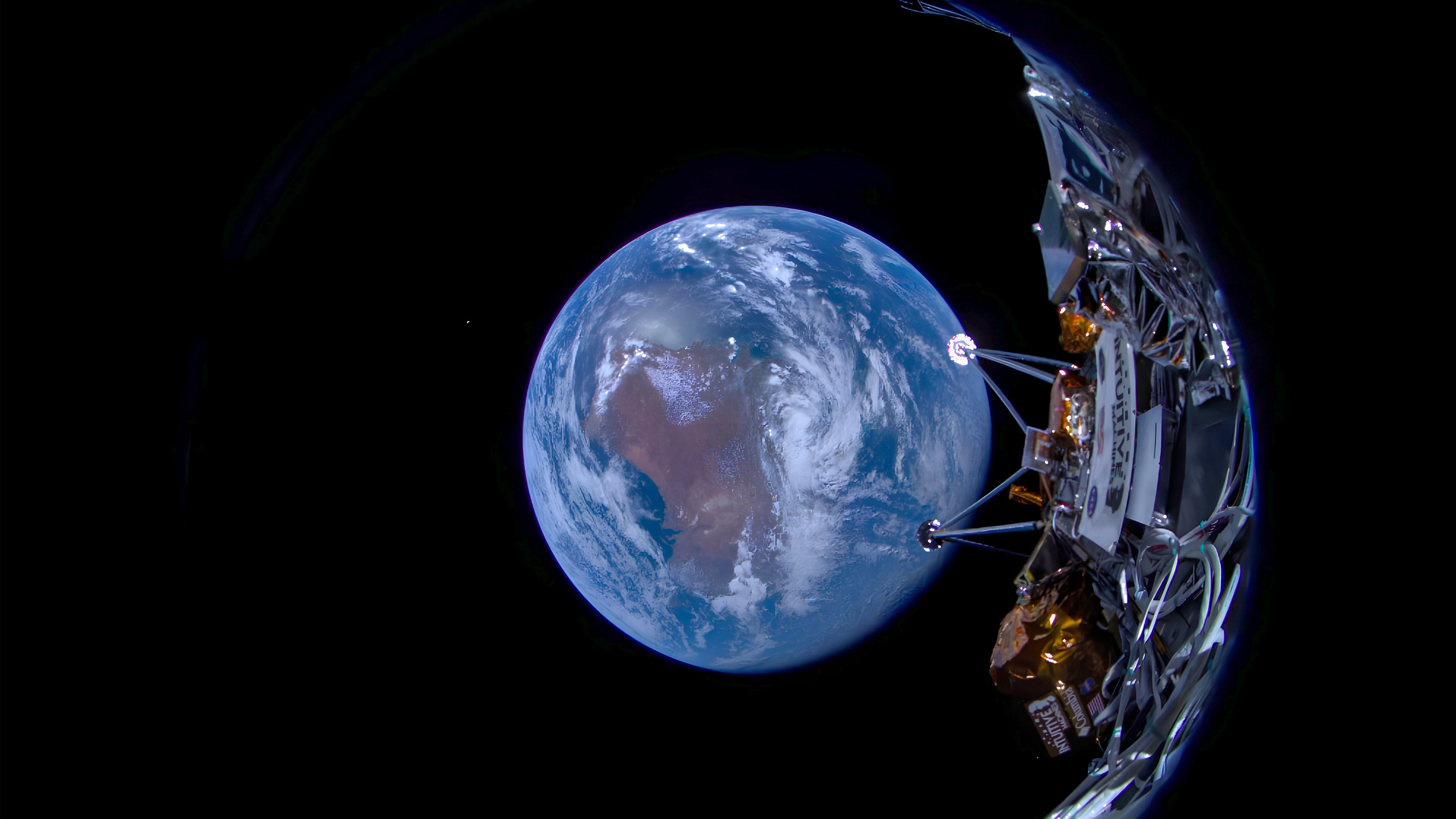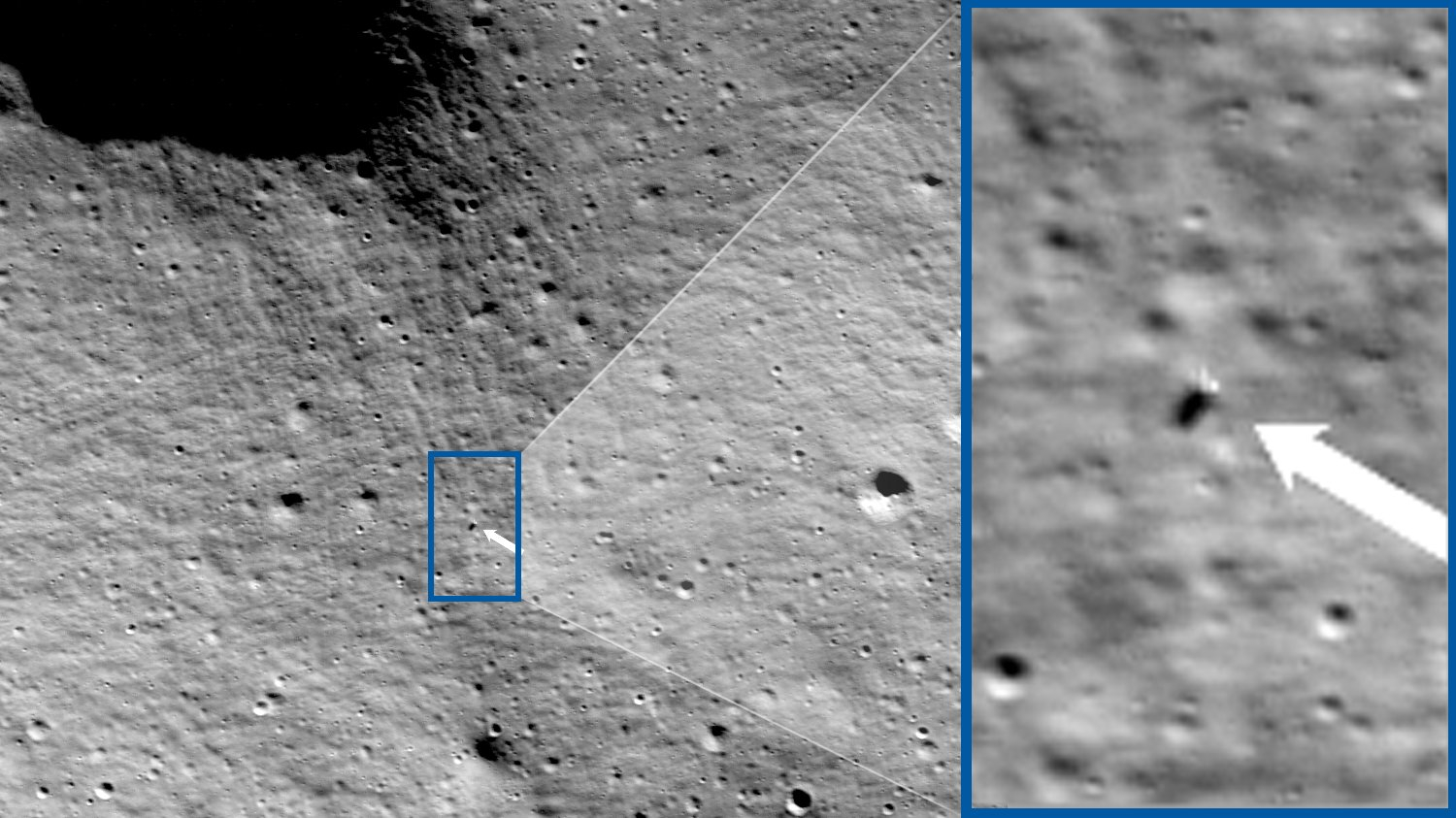Private Odysseus moon lander reveals which Earth 'technosignatures' aliens might see
Astrophysicist Jack Burns of the University of Colorado Boulder described the moment as the "dawn of radio astronomy from the moon."

Human technology like cell phones and broadcast towers constantly radiate radio waves into space, and astronomers estimate this tell-tale signature of humanity has swept across 75 nearby star systems, signaling to any watchful alien civilization that Earth hosts a technologically advanced species. And, while scientists have listened to the incessant radio chatter from our planet for a long time, in late February, they heard it from the moon for the first time.
A small radio telescope onboard the Odysseus spacecraft, the first commercial vehicle that successfully landed on the moon on Feb. 22, recorded radio waves beamed from Earth for 1.5 hours. The experiment, named ROLSES, made its observations from Odysseus' landing spot near the Malapert A crater, which sits roughly 185 miles (297 kilometers) away from the moon's south pole.
Astrophysicist Jack Burns of the University of Colorado Boulder, who is the co-investigator of ROLSES, described the moment as the "dawn of radio astronomy from the moon." By studying Earth as an exoplanet, astronomers hope to search for similar fingerprints coming from planets around other stars, which would be a potential sign of intelligent life.
Speaking on Monday (June 10) at the 244th meeting of the American Astronomical Society in Wisconsin, Burns pulled up an image on screen in which tiny white dots appeared sprinkled over a jet-black background, mostly forming horizontal lines."That's the Earth," he said.
The white specks are radio signals from transmitters on Earth as recorded by the ROLSES experiment's four antennas. It is "a really good 'frequency selfie' of the Earth [...] that's unparalleled to date" in terms of looking at Earth in radio wavelengths, Burns added.
During its historic landing on Feb. 22, the 14-foot (4.3-meter) Odysseus spacecraft descended faster than planned and tipped over on its side, likely because it fractured one or two of its landing legs after striking a piece of lunar terrain, Tim Crain, Intuitive Machines co-founder and CTO, previously said. As a result of this unexpected orientation, the spacecraft's antennas weren't pointed back at Earth, reducing the rate at which data could be sent by a lot.
Breaking space news, the latest updates on rocket launches, skywatching events and more!
Perhaps due to these issues, the ROLSES instrument recorded data for a total of two hours instead of the eight days astronomers were hoping for, Burns said on Monday. The reduced time would affect the signal-to-noise ratio of the collected data, he added. It was not immediately clear whether the researchers would be able to decode the transmissions to determine the content of those radio waves.
The researchers also gathered a serendipitous 20 minutes of data when one of Odysseus’ antennas slightly overheated and popped out of its secure place on the lander. “So we took advantage of that, turned on our radio spectrometer, and we got some data,” said Burns.
After a week of operations on the moon, Odysseus went silent on Feb. 29 after sundown hit its landing site, which was expected given the spacecraft wasn't designed to survive the cold lunar night. When sunlight once again shone on Odysseus' solar panels on March 20, Intuitive Machines, the Houston-based company that built the spacecraft, listened for but failed to hear its wake-up signal. Three days later, the company declared "Odie has permanently faded after cementing its legacy into history as the first commercial lunar lander to land on the moon."
Astronomers including Burns are now looking ahead to the launch of another small radio telescope that is expected to launch to the moon's far side in 2026. The Lunar Surface Electromagnetics Experiment-Night, or LuSEE-Night for short, is being designed to detect radio waves from 13.4 billion years ago, a mysterious era when the universe and its first stars and galaxies were cloaked in a primordial fog of hydrogen. Astronomers refer to this epoch as the cosmic Dark Ages, which the James Webb Space Telescope has only recently begun probing.

Sharmila Kuthunur is an independent space journalist based in Bengaluru, India. Her work has also appeared in Scientific American, Science, Astronomy and Live Science, among other publications. She holds a master's degree in journalism from Northeastern University in Boston.

